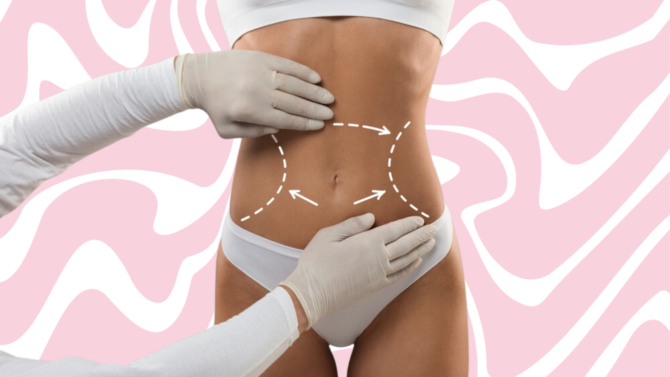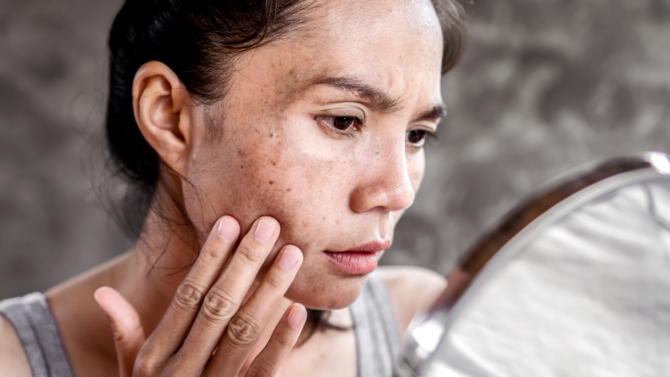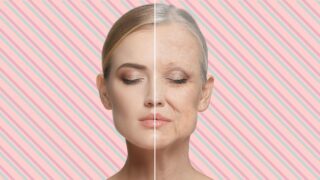Dark under-eye circles are one of the most common aesthetic complaints, and while there are several effective options to lighten and brighten under the eyes, dark circles are one of the tricker concerns to treat.
This is because there can be multiple causes for dark circles, so there isn’t a one-size-fits-all solution. We asked two of our TTG-registered expert practitioners for top tips when considering treatment.
1. Find out the cause
‘The best treatment for dark circles very much depends on the cause,’ says Dr Ahmed El Muntasar, based in London, Leeds and Cheshire. ‘If it’s because of hollowness, that can create a shadow when the light hits, so you get that kind of deep crease. Sometimes, [the effect of dark circles] is created by little lines underneath the eyes… it could be from pigmentation or sometimes it’s thinning of the skin,’ he adds. This is why it’s so important to have a thorough consultation with an experienced practitioner who can assess the underlying causes of your own dark circles and recommend an appropriate treatment plan. That treatment plan might include tear trough filler – but it’s not always the answer.
2. If it’s hyperpigmentation…
Hyperpigmentation is very common under the eyes, especially in skin of colour, and this alone has lots of different causes. Dr Bhavjit Kaur, who has clinics in London and Orpington, lists some of the causes: ‘It could be heredity, caused by friction due to constant rubbing of the eyes, excessive sun exposure, or hyperpigmentation from an allergy or atopic dermatitis.’ Depending on the individual patient, she will often counteract the darkening of the skin under the eyes by adding volume to the area, removing the shadowy appearance. ‘Soft-tissue fillers and autologous fat grafting are most effective in treating dark circles due to volume loss,’ she says, and she’s also a fan of chemical peels to treat pigment-based dark circles (if safe around the eyes), as is Dr El Muntasar.
3. Build up that collagen
We know collagen is the holy grail of youth, and in some cases it’s also what’s needed to banish dark circles. If your dark circles are down to thinning of the skin in the under-eye area, Dr El Muntasar suggests looking into microneedling. Careful – very careful – clinical needling under the eyes with a microneedling pen will increase the thickness of the dermis by activating the skin’s wound-healing response and stimulating collagen and elastin production. The renewed skin will be plumper and the dark circles less visible. Skin boosters, PRP and mesotherapy can all work in a similar way – it’s down to finding the right, tailored solution for you.
3. Treat with skincare
The right under-eye skincare can be really helpful in getting rid of dark circles, or at least visibly improving them. ‘Use an eye cream with some of the following ingredients to prevent further damage,’ advises Dr Kaur. ‘Vitamin C, an antioxidant, has a brightening action and prevents further damage from sun; vitamin K improves circulation, and caffeine decreases puffiness.’ She adds that using a retinoid product under the eyes overnight can be helpful for treating pigmentation, but it’s important to start on a low percentage and increase gradually to avoid irritation, as the skin is of course much more sensitive under the eyes.
If your dark circles are caused by pigmentation, you may also want to talk to your practitioner about a hydroquinone cream, says Dr El Muntasar. It’s is a de-pigmenting agent which works by decreasing the production of melanin. ‘Hydroquinone could be good, but used with caution, – most of these are prescription-only,’ he says. And make sure you’re taking your sunscreen up to under the eyes to prevent and treat sun damage that will worsen dark circles. Look for something ophthalmologist-approved to avoid irritating the eyes.
5. Stop rubbing your eyes
Something we can all do that doesn’t cost a thing is to stop rubbing our eyes. Seems simplistic, but there’s a good reason. ‘I never treat periocular hyperpigmentation if the patient does not stop rubbing the eyes or does not apply sunscreen in the area,’ says Dr Kaur. ‘Rubbing of the eyes not only causes frictional hyperpigmentation, but also can cause tiny blood vessels (capillaries) to break and leak. This can cause short and long-term hyperpigmentation of the under-eye skin due to blood pooling – bruising. As the bruising heals, a component of hemoglobin called hemosiderin is left behind. Hemosiderin is pigmented and causes dark circles under the eyes.’
The Tweakments Guide Takeaway
Yes, there ARE things you can do that will make a difference. Identify the cause of your dark circles, and you will be on your way to working out the best way to treat them, either with skincare or tweakments.
Join Our Mailing List
This is the best way to stay in the loop with our latest news and updates, including industry titbits and tailored offers.
Related Stories

Concerns
Where To Find The Best Advice From TTG’s Leading Practitioners
Have a burning question about tweakments and/or skincare? Premium spots for The Tweakments Guide Live may...

Concerns
Tone, Sculpt, Reduce: Our Favourite Body Contouring Tweakments
If you are struggling with stubborn fat and sagging skin that doesn’t want to budge even with a healthy...

Concerns
Try These Next-Gen Facials For Your Pre-Christmas Party Prep
From providing an instant skin glow to targeting fine lines and sun damage, the next generation of advanced...

Concerns
How To Treat Your Hyperpigmentation With Our Favourite Treatments
The clocks have gone back and the nights are getting colder – but at least there’s a light at the...







 The Tweakments Chatbot
The Tweakments Chatbot